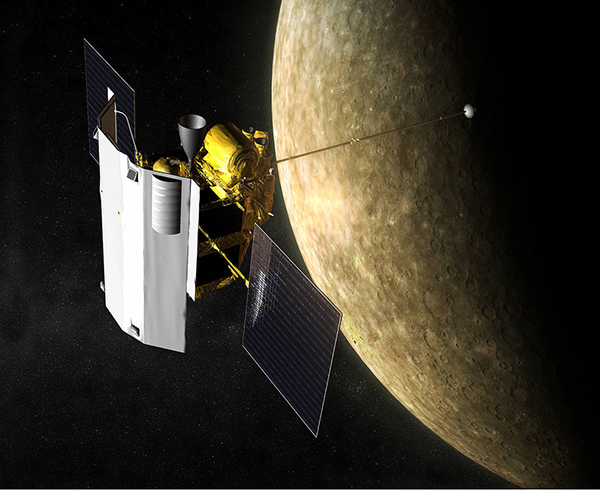Using old data from the NASA spacecraft MESSENGER, researchers have demonstrated how to measure the average lifetime of a neutron from space. This finding is important because, despite decades of efforts, physicists still cannot definitively say how long neutrons remain intact when outside of an atomic nucleus. Constraining this “lifetime” has important implications for refining theories regarding the formation of elements in the early universe after the big bang. See also: Big bang theory; Nucleosynthesis; Neutron; Space

Neutrons are subatomic particles that, along with protons, compose the nuclei of atoms. Outside of the nucleus, neutrons decay into electrons and protons—the other two subatomic components of atoms—in under 15 minutes. Yet the two well-developed, laboratory-based techniques for gauging the neutron lifetime differ in their assessments by about nine seconds. One technique—the bottle method—involves removing neutrons from atoms, containing the neutrons in a bottle, and counting how many neutrons are left after a span of time. This method provides an average neutron lifetime of 14 minutes, 39 seconds. The alternative approach—the beam method—starts with a beam of neutrons and then counts the decay-product protons that form, which relates back to the neutron lifetime. This beam method arrives at a variant average neutron lifetime of 14 minutes, 48 seconds. See also: Atomic nucleus; Electron; Nuclear structure; Proton
In an attempt to break the logjam, researchers have now innovatively demonstrated a novel, third method with data captured by the MESSENGER (MErcury Surface, Space ENvironment, GEochemistry, and Ranging) probe, which orbited the planet Mercury from 2011 to 2015. To ultimately settle into its orbit, MESSENGER had to initially perform a series of flyby maneuvers of Earth, Venus, and Mercury to shed momentum. When MESSENGER flew past Venus and Mercury in 2007 and 2008, the spacecraft measured neutrons emanating from each world. Those neutrons were generated by high-energy particles known as cosmic rays, striking the planets' atmospheres and surfaces. As the neutron counts dwindled as the spacecraft receded from the planets, researchers could infer how quickly neutrons were decaying. The approximate lifetime calculated from this method came out to about 13 minutes, on par with the other lab-based measurements. Because MESSENGER was not designed to take this sort of delicate measurement, these initial results serve merely as a crude proof-of-principle. However, designing a dedicated precision neutron lifetime space mission could potentially work as an independent method for eliminating the surprising uncertainty that still surrounds the lifetime of a ubiquitous subatomic particle. See also: Cosmic ray; Mercury (planet); Momentum; Venus





